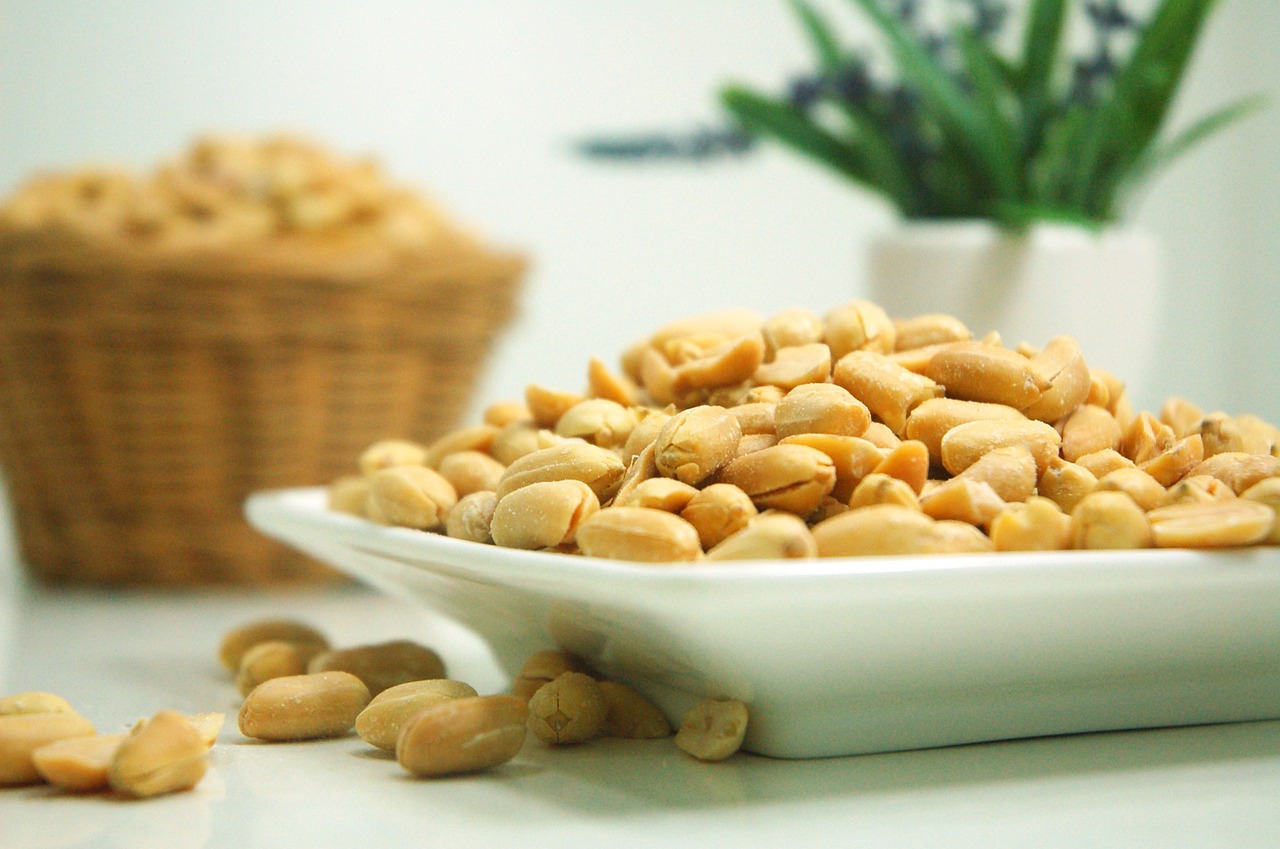Living
The Most Common Food Allergies and How to Avoid Them
5 min read
62 views

1. Peanut Allergy
Peanut allergies are one of the most common and potentially dangerous food allergies. Even trace amounts of peanuts can trigger an allergic reaction, and symptoms can range from mild rashes to severe anaphylaxis.How to Avoid Peanuts
- Always check ingredient labels for peanuts or peanut oil.
- Be aware of foods that might contain peanuts in hidden forms, such as sauces, snacks, or processed foods.
- Avoid cross-contamination by using separate utensils and cooking equipment.
- When dining out, ask about peanut oils and other potential sources of contamination in food preparation.
2. Tree Nut Allergy
Tree nuts, including almonds, cashews, walnuts, and pistachios, are another common allergy. Like peanut allergies, tree nut allergies can cause severe reactions.How to Avoid Tree Nuts
- Read ingredient labels carefully for any mention of tree nuts or tree nut oils.
- Avoid foods like mixed nuts, nut butters, and pastries that may contain tree nuts.
- When shopping, check for products specifically marked "tree nut-free."
- Be cautious of cross-contamination in kitchens or restaurants where nuts are present.
3. Dairy Allergy
Dairy allergies are different from lactose intolerance, as they involve an immune system reaction to proteins in milk, such as casein or whey. Symptoms can include skin rashes, digestive issues, or respiratory problems.How to Avoid Dairy
- Avoid milk, cheese, butter, and other dairy-based products.
- Look for dairy-free alternatives, such as almond milk or coconut yogurt, to replace common dairy ingredients.
- Read ingredient labels for hidden dairy sources, including casein, whey, and lactose.
- When dining out, ensure that dairy-free options are prepared without cross-contact with dairy products.
4. Egg Allergy
Egg allergies are most commonly seen in children, though they can persist into adulthood. Symptoms can include hives, digestive issues, and in severe cases, anaphylaxis.How to Avoid Eggs
- Avoid all forms of eggs, including hard-boiled, scrambled, and baked eggs.
- Be mindful of hidden sources of eggs in foods like mayonnaise, pasta, and certain salad dressings.
- Check ingredient labels for terms like albumin, egg whites, or egg yolk.
- Consider egg substitutes such as flaxseed or chia seeds when cooking at home.
5. Shellfish Allergy
Shellfish, including crustaceans (shrimp, crab, lobster) and mollusks (clams, oysters, squid), are among the most common food allergens. Reactions can be severe and happen rapidly.How to Avoid Shellfish
- Always ask restaurant staff about how dishes are prepared, ensuring no shellfish is used or cross-contamination occurs.
- Avoid shellfish-heavy dishes like seafood paella, sushi, or shrimp scampi.
- Be careful with processed foods that may contain shellfish or shellfish-derived ingredients.
- Carry an epinephrine injector if you are highly allergic to shellfish.
6. Wheat Allergy
Wheat allergies are more common in children but can also affect adults. Symptoms can range from skin reactions to respiratory issues. Wheat allergies are different from celiac disease, which is a gluten intolerance.How to Avoid Wheat
- Avoid products made with wheat, such as bread, pasta, and baked goods.
- Look for wheat-free and gluten-free labeled foods when shopping.
- Read ingredient labels for terms like wheat flour, durum wheat, or semolina.
- When dining out, ensure that wheat products do not come into contact with your meal through cross-contamination.
7. Soy Allergy
Soybeans and soy-based products, such as tofu, soy sauce, and edamame, are common allergens, particularly in children. Soy can also be found in processed foods as lecithin or soybean oil.How to Avoid Soy
- Avoid foods that contain soy or soy derivatives, including tofu, soy milk, and soy sauce.
- Check ingredient labels for hidden sources of soy, like soybean oil or lecithin.
- Be cautious with processed foods that may contain soy as a filler or additive.
- Consider non-soy-based alternatives, such as almond milk or coconut-based products.
8. Fish Allergy
Fish allergies, including allergies to salmon, tuna, and cod, can cause severe reactions. This allergy is different from shellfish allergy and can be triggered by even trace amounts of fish.How to Avoid Fish
- Avoid all types of fish and fish products like fish sauce or surimi (imitation crab).
- Check for fish in prepared sauces, soups, or broths.
- When dining out, always confirm with the restaurant that no fish is used in the preparation of your meal.
- Be cautious when eating at buffets, where cross-contamination is more likely.
9. Sesame Allergy
Sesame allergies are on the rise and can cause reactions ranging from mild rashes to life-threatening anaphylaxis. Sesame seeds and sesame oil are commonly found in many foods.How to Avoid Sesame
- Avoid foods that contain sesame seeds or sesame oil, including breads, hummus, and granola bars.
- Check for sesame in unexpected foods, like snack mixes and protein bars.
- Be aware that sesame can be cross-contaminated with other allergens in kitchens and factories.
- When eating out, make sure staff is aware of your sesame allergy and how to avoid cross-contact.
Conclusion
Living with a food allergy requires careful attention and planning. By understanding the most common food allergens and taking proactive steps to avoid them, individuals with food allergies can minimize the risk of an allergic reaction. Always read ingredient labels, ask questions when dining out, and carry emergency medications, such as epinephrine, if necessary.Remember: Your health is the top priority. Take control of your food allergy management, and don't hesitate to seek out allergy-friendly products, restaurants, and recipes that can help keep you safe and thriving.
Stay safe and enjoy your food allergy-free journey!


